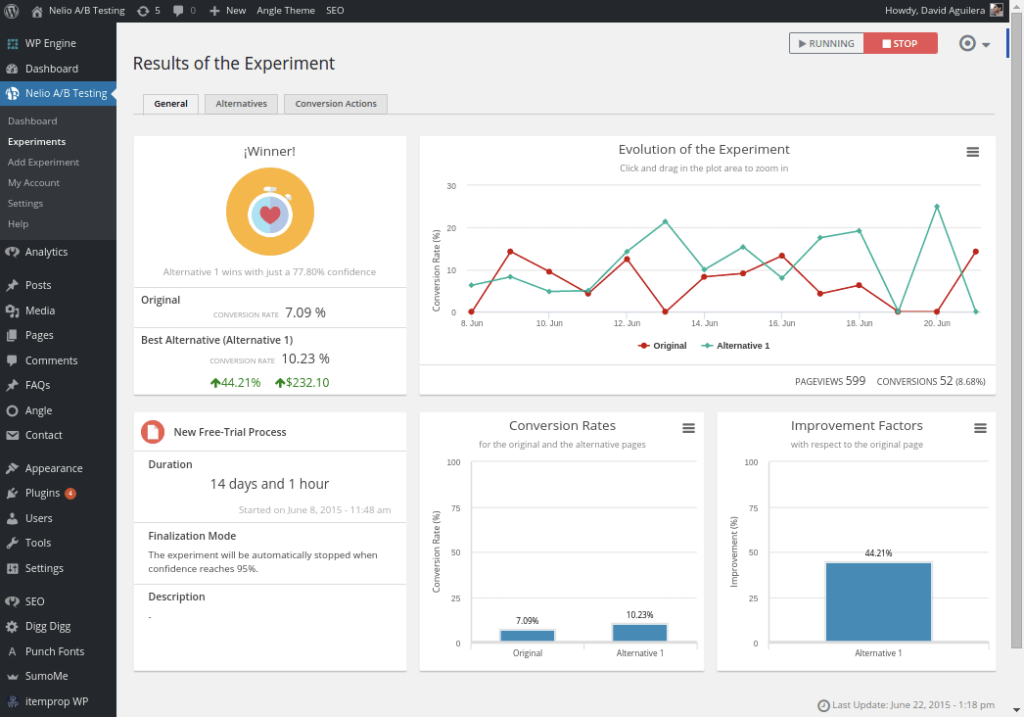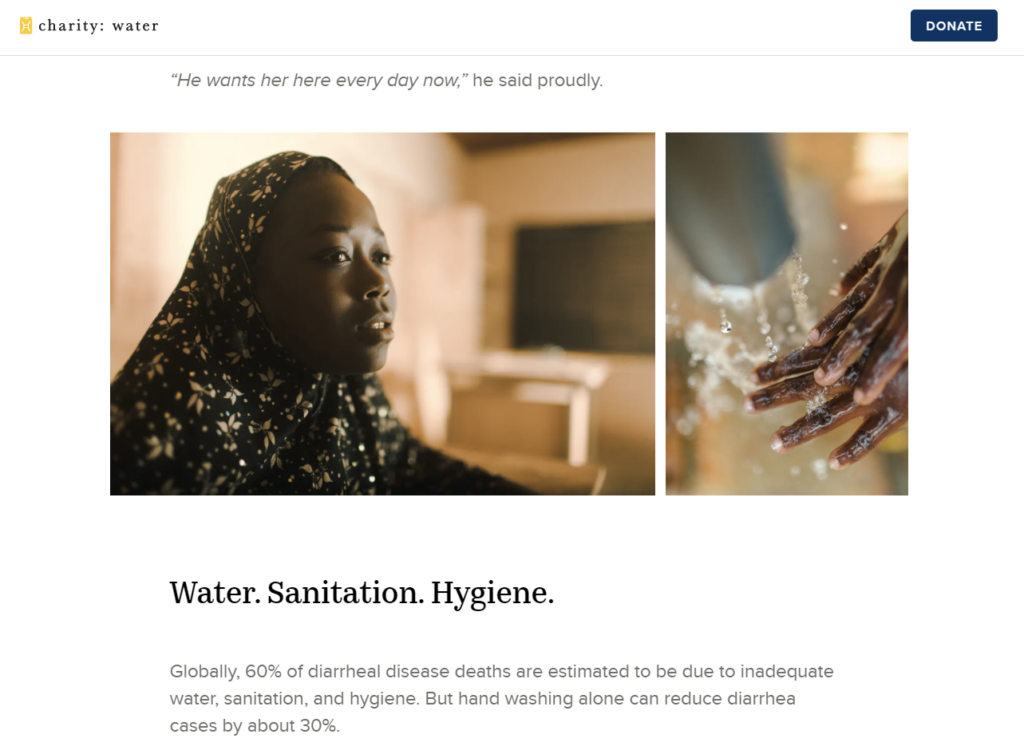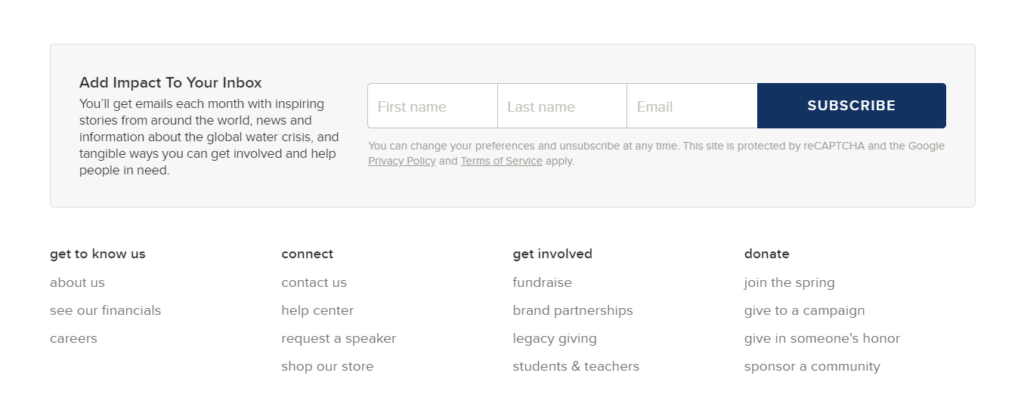How to Increase Conversions on Your Nonprofit Website
Do you want to receive more donations? Be mindful about your Nonprofit’s website and improve your conversion rate. Check out these 5 tips.

Your nonprofit website may be designed to serve multiple purposes, but undeniably, one of the primary purposes is to convert visitors into donors.
Look at your website from a donor’s perspective — does it persuade you to give? Are you able to find all the information you need to be convinced?
To improve your site’s conversions, you must design it in a donor-centric way. Here are five tactics to do just that.
1. Create Short and Impactful Forms
Let’s begin with the end in mind — the ultimate conversion for your nonprofit is a successful donation. A donation form is how you accept donations, which means you must put special care into making it as streamline and impactful as possible.
So, with the help of a professional and easy-to-use online form builder, prioritize building high-converting forms. And to increase form conversions, follow these best practices:
- Ask only for necessary information such as name, email address, and payment details. The fewer clicks and fields your form has, the higher the conversion rate.
- Consider breaking it down into a multistep form, with slides for donation amount, contact information, payment, review. This lets donors focus on one step at a time and simplifies the form visually to avoid overwhelm.
- Provide multiple payment options such as PayPal, credit cards, etc.
- Offer suggested donation options (one-time or monthly) and amounts that are slightly lower, on par with, and above the average donation to your nonprofit.

- Showcase security measures (SSL certificate, trust badges, etc.) as donors’ are parting with sensitive personal information. Embed the form directly on your website instead of sending donors to a third-party site.
- Don’t enforce account creation and login, unless donors wish to save their info for future donations.
- Reaffirm the purpose and impact of their donation with a crisp copy and photos.
- Ensure the form is mobile-optimized and loads fast.
Optimizing your donation form in these ways makes donating an easier and more streamlined experience for prospective donors.
2. Showcase Up-to-Date, Accurate Information
Logic dictates that the more trustworthy your website is, the more donations it will garner. So, building your nonprofit’s credibility is one of the first and most important steps in landing more conversions.
Visitors would only consider making a donation if they’re able to learn everything they want to about your nonprofit. This means you must provide information that’s relevant, accurate, up-to-date, to the point, and answers most (if not all) of a potential donor’s questions.
So, make sure to have the following information easily available:
- Value proposition: A statement that tells your prospects why they should donate to your cause, highlighting what impact their donation will have.
- Mission and vision: What your organization hopes to achieve in the short and long run.
- Backstory: Why your nonprofit came into existence.
- Your leadership structure: Your nonprofit’s executive leadership and board members must be listed with their credentials, affiliations, and headshots.
- Contact information: Updated contact information of your main office, subsidiary locations if any, and specific staff members.
- Ongoing programs and fundraisers: Latest updates on any ongoing campaigns and new initiatives.
- FAQs: A page or section of the website dedicated to answering all potential questions a visitor may have.
All this information helps to build transparency and trustworthiness, which translates to more conversions.
3. A/B Test the Various Elements on Your Site
Split testing, aka A/B testing, is a conversion rate optimization (CRO) technique that involves splitting the various elements (images, copy, buttons, etc.) on your website into two variants and determining which variant drives more conversions.
So A refers to “control” or the original testing variable, and B refers to “variation” or a new version of the element you’re trying to optimize for more conversions.
The version that results in more conversions is called the “winner”. Implementing the changes of this winning variation on your tested pages optimizes your nonprofit website for more donations.
You start with a hypothesis and focus on one change at a time, like the color of a donation button, or the size of the form. Then, using an A/B testing software like Google Optimize, you display the variation to half of your traffic, while the other half sees the original version.

Here are a few areas of your website you can A/B test:
- Default donation amount
- Button colors, size, font
- Call to action copy (for example, “Donate Now” vs. “Help End Hunger”)
- Visuals (for example, images vs. videos)
Such small variations may seem insignificant but when you think about it — even a $5 increase in average donation amount per donor, with say 1000 monthly donors, could add up to a $5000 increase in monthly donations.
You can also implement split testing on social media ad copies and email campaigns for a fully optimized donor journey.
4. Use Storytelling on Your Blog
Storytelling is powerful.
Sharing real stories from real people — past donors, victims, your leadership team, etc. — on your nonprofit website’s blog is a great way to evoke the emotions in prospective donors.
Share an insider perspective of someone who’s positively influenced by your nonprofit’s work. Supplement the story with powerful images and videos. For example, Charity: water shares inspiring stories on their website.

Each story is backed with photos and ends with a convincing call to action.

They also encourage their readers to subscribe to their newsletter at the end of each post.

So, at the end of a rousing post, be sure to explain how a small donation or support helps your nonprofit make a difference.
Furthermore, sharing stories and frequently publishing blog posts helps your nonprofit website to rank higher on search engines. This improves your nonprofit’s organic visibility, helps drive more traffic, and thus, boosts conversions.
5. Optimize the Post-Donation Experience
As mentioned in the beginning, increasing conversions on your nonprofit website is all about optimizing the on-site experience for your visitors. This includes visitors who have converted into donors.
After all, it’s easier to retain donors than it is to acquire and convert new ones. What’s more, recurring donors’ support and trust in your nonprofit can snowball over time, so you may receive larger donations and word-of-mouth referrals if you make efforts to retain them.
Right after someone completes a donation, the usual process you have in place is to reroute them to a basic confirmation page along with a “thank you” note sent on email. But you can take this a step further by having:
- Prominent social sharing buttons on the confirmation/thank you page, enabling them to easily share their good deed and encourage others to do the same
- A quick survey to learn what your donors care about, so as to tailor your future donation appeals
- An option to sign-up for your newsletter, so as to deliver relevant content and keep them in the loop
Consider a successful donation as the first step in building a long-term relationship with the donor. Based on the campaign(s) they donated for, the amount, and mode of payment, you can personalize your future efforts by:
- Knowing when to make a donation appeal based on their donation timeline
- Requesting a generous but realistic gift based on their usual donation amount
- Emphasizing their preferred mode of payment when requesting a new donation
Long story short, a basic automated “thank you” note suffices, but isn’t ideal for retaining donors and boosting future conversions. So take the time to optimize the post-donation experience, and set yourself up for more and bigger conversions in the future.
Wrapping Up
Increasing your conversions isn’t a one-time effort. It requires continuous testing and optimization, and updating of information and content to create a website that’s compelling and helpful enough to drive more donations.
Use Google Analytics to regularly check key metrics like page views, conversion rate, bounce rate, etc., and constantly fine-tune your pages to hit your goals.
FAQ
What are the best strategies to increase conversions on a nonprofit website?
Employing clear calls-to-action, optimizing the website for user experience, showcasing impact stories, and utilizing persuasive content are effective strategies.
How important is website design in improving conversions for nonprofits?
A well-designed website that is visually appealing and easy to navigate significantly enhances user engagement, thus potentially increasing conversion rates.
Can social proof help in increasing conversions on a nonprofit website?
Absolutely. Including testimonials, success stories, and endorsements builds credibility and trust, which can encourage visitors to take action.
What role does content play in conversion optimization for nonprofit websites?
High-quality, compelling content that resonates with the audience and clearly communicates the nonprofit’s mission and impact can greatly enhance conversion rates.
How can a nonprofit website use storytelling to increase conversions?
Storytelling can emotionally connect visitors to the cause, making them more likely to donate, volunteer, or sign up for newsletters.
What are the best practices for optimizing donation forms to improve conversions?
Simplifying the donation process, minimizing form fields, and providing multiple payment options can significantly streamline the giving process and boost conversions.
How does mobile optimization affect conversions on nonprofit websites?
With increasing mobile traffic, having a mobile-optimized website is crucial for reaching a wider audience and facilitating easy donations or actions on-the-go.
Can email marketing be used to increase conversions on a nonprofit website?
Yes, targeted and personalized email campaigns can drive traffic back to the website and encourage specific actions, leading to higher conversion rates.
What is the importance of A/B testing in increasing website conversions for nonprofits?
A/B testing allows nonprofits to experiment with different elements of their website to see what resonates best with their audience, thereby optimizing for higher conversions.
How do analytics and tracking tools help in increasing conversions?
These tools provide insights into visitor behavior, helping nonprofits understand what works and what doesn’t, and make data-driven decisions to improve conversion rates.
How can engaging visuals impact conversion rates on a nonprofit website?
Compelling images and videos can capture attention, evoke emotions, and effectively communicate the cause, thereby encouraging visitors to take action.
What is the significance of a clear value proposition on a nonprofit website?
Articulating a clear, compelling value proposition helps visitors understand the unique benefits of supporting the nonprofit, which can boost conversion rates.
How can optimizing the loading speed of a nonprofit website affect conversions?
Faster loading speeds improve user experience, reduce bounce rates, and can significantly increase the likelihood of visitors taking desired actions.
What role does website security play in conversion rates for nonprofits?
A secure website, especially for transactions, builds trust among visitors, making them more comfortable with making donations or providing personal information.
How can a blog or resources section on a nonprofit website aid in increasing conversions?
Regularly updated blogs or resources can drive continuous engagement, establish authority, and lead visitors towards conversion points like donation forms.
Can integrating social media on a nonprofit website help in increasing conversions?
Social media integration can extend the reach, foster community building, and provide additional platforms for visitors to engage and convert.
What are the benefits of using pop-ups or exit-intent technology on a nonprofit website?
Strategically used pop-ups or exit-intent technology can grab attention at critical moments, offering reminders or incentives to take action before leaving the site.
How does personalization of content contribute to higher conversion rates on nonprofit websites?
Personalized content, based on user behavior or preferences, can make the user experience more relevant and engaging, leading to increased conversions.
What is the impact of clear navigation and site structure on a nonprofit’s website conversion rate?
A website with intuitive navigation and a clear structure helps visitors find information quickly and easily, reducing frustration and encouraging positive action.
How can volunteer or beneficiary stories be used to increase conversions on a nonprofit website?
Sharing real-life stories of volunteers or beneficiaries can create a personal connection and inspire visitors to donate, volunteer, or spread the word.
How do testimonials from donors or volunteers affect a nonprofit website’s conversion rates?
Testimonials provide social proof and can significantly influence new visitors to take similar actions, such as donating or volunteering.
What is the importance of a responsive design for nonprofit websites in driving conversions?
A responsive design ensures the website is accessible and user-friendly across all devices, which is essential for capturing a wider audience.
Can offering multiple donation options increase conversions on a nonprofit website?
Yes, providing various ways to donate, including one-time, recurring, and tribute giving, caters to different preferences and can boost donation rates.
How can a nonprofit use events and webinars to increase website conversions?
Hosting events and webinars can engage the community, provide value, and create opportunities for visitors to get involved or donate.
What is the role of effective call-to-action (CTA) buttons in increasing conversions?
Well-designed, prominently placed CTA buttons with compelling text can guide users towards taking the desired action, like donating or signing up.
How does user feedback help in optimizing a nonprofit website for better conversions?
Gathering and acting on user feedback can improve the website experience and address barriers to conversion, leading to better results.
Can a membership program on a nonprofit website enhance conversion rates?
Offering a membership program with exclusive benefits can encourage visitors to engage more deeply with the organization, leading to higher conversion.
How important is it to regularly update content on a nonprofit website?
Regularly updated content keeps the website dynamic and relevant, encouraging repeat visits and ongoing engagement that can lead to conversions.
What impact does clear and transparent reporting of funds and impact have on website conversions?
Transparency in how funds are used and the impact achieved builds trust and credibility, encouraging more visitors to convert into donors or supporters.
How can partnerships with other organizations be showcased to increase conversions?
Highlighting partnerships can enhance the nonprofit’s credibility and reach, potentially attracting supporters of partner organizations to the website.
Other related articles
Create more and better content
Check out the following resources and Grow!









